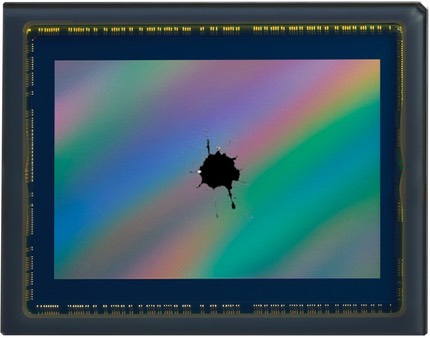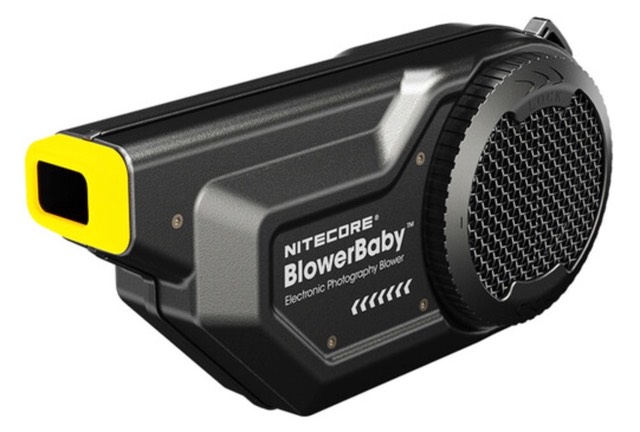
I still get significant questions about sensor cleaning with mirrorless cameras, plus a lot of need-for-cleaning denial from m4/3 mirrorless users. So let’s once again try to come to grips with what’s happening and what you should do about it.
Sensors on mirrorless cameras are more exposed than on DSLRs during lens changes (if the sensor isn't exposed, then the shutter blades are, which is worse in many situations, because touching it might require repair, not cleaning). Well, not exactly the sensor, but the filter that sits on top of the sensor, which is there to remove UV and IR light, and on some models also provides anti-aliasing.
Dust and other things can get lodged on the top of that filter, and that’s what we need to clean.
In particular, the one thing that I find you have to be very careful about with mirrorless cameras is “splashes.” Obviously, don’t change lenses next to breaking waves or a waterfall, or in light rain. But I’ve seen some other interesting cases in seven years of using mirrorless. For example, I had someone sneeze on my sensor while the camera was open for a lens change. To which I’d add that you probably shouldn’t change lenses in front of a camel ;~).
So, yes, right up front it should be obvious that there will be instances where things get on the filter in front of your mirrorless camera sensor that should be dealt with (cleaned).
Aside: Why is the shutter left open on mirrorless cameras? Good question. First, the shutter needs to be open for the LCD or EVF to let you compose. By not having the shutter closed, the camera is ready to operate just a little faster when you turn it on. There’s no reason why you can’t design a mirrorless camera that closes the shutter when you remove a lens, and several cameras actually allow that now, but there are implications in doing so. Shutter blades, when closed, are vulnerable to touch, so it would be easier to injure the shutter if you accidentally poked something that hit the blades.
Olympus (now OMDS) users are in deep denial, though. I’ve heard quite a few of them claim that their sensor never needs cleaning. Actually, just because they don’t see anything in their images doesn’t mean it isn’t there.
There are two primary reasons why Olympus users in particular never notice things on their sensor: (1) they rarely are shooting at even f/8, let alone smaller apertures, because of diffraction impacts; and (2) Olympus/OMDS uses a very thick filter stack above the sensor, which makes it much more difficult to see how dirty the sensor is in the pixel data. The further the front of the filter is from the actual photon detection area, the more pixels those tiny dust spots spread their visual impact over; the visual impact is reduced from being a distinct black shadow to just being a contrast inhibiter in the Olympus/OMDS design.
That’s the problem, though. Anything on the filter will essentially reduce local contrast, just as significant amounts of dust on the front of the lens will reduce overall contrast. Just because you can’t see a dust bunny at the pixel level on your computer screen doesn’t mean that the sensor is clean on an Olympus camera. If you don’t clean your sensor at least once in a while, you’re simply going to be slowly building some very low level of contrast reduction into your camera. Yes, that may be so low a level you don’t notice, but why would you want any contrast reduction in your image data?
Nikon tends to be the opposite of Olympus/OMDS, and uses thin filtration, and in most cases that's closer to the image sensor. So dust shows up easier in these cameras. The Z50, which doesn't have a built-in sensor cleaning system, is particularly prone to showing dust.
So, periodic cleaning is probably a reasonable thing to do.
Unfortunately, the cameras with image stabilization at the sensor are a bit of of a problem when it comes to cleaning. OMDS still seems to recommend that you don’t do it yourself. Sony had real issues with their original IS system as people were breaking one of the supports for the stabilization swivel (not necessarily from cleaning, but that was a contributor). Sony's easy-to-break design has since been fixed on recent models, but just be aware that if you have IS-on-sensor on your mirrorless camera, you really want to avoid using any substantive force while cleaning. To my knowledge, only Nikon is solidly parking their VR (IS) system at the sensor. Indeed, on the Z8 and Z9, you can hear the camera go "clunk" when it does so.
Note that I wrote “while cleaning.”
I firmly believe that you should be periodically cleaning your image sensors. Not as much as folk think they have to (mirrorless or DSLR users). Even with my Nikon DSLRs I tend to do proactive sensor cleanings only once a year or so; that's on top of whenever I can see something clearly creating a problem in my images. I always carry cleaning tools with me around the world, but I rarely use them in the field.
Let’s see, at this point I’ve been using m4/3 for fifteen years and E-mount for more than ten. In that time, I’ve probably cleaned my sensors about once a year per camera, typically provoked by something I noticed on close inspection.
So you don’t have to get anal about this. You just have to get yourself out of denial. At some point, your sensor could probably benefit from a cleaning. At some point you’re going to encounter something getting on the sensor filter that requires cleaning.
Thus the answer to the questions I get about mirrorless sensor cleanings is this: no, mirrorless cameras are not immune from sensor cleaning.
My advice on sensor cleaning: Thom’s DSLR Sensor Cleaning Article. But if you don't want to do it yourself, have someone that knows what they're doing (good camera dealer, service center, camera manufacturer, etc.) do it for you once a year. Or at least inspect the sensor filter carefully to make sure there’s nothing on it.

Update: I originally thought it was going to be a gimmick, but the Nitecore BlowerBaby [advertiser link] turns out to be a handy tool for mirrorless users. Just keep the Nitecore's air filter clean, and don't use it where you could redirect spray, mist, or dampness into the camera.
